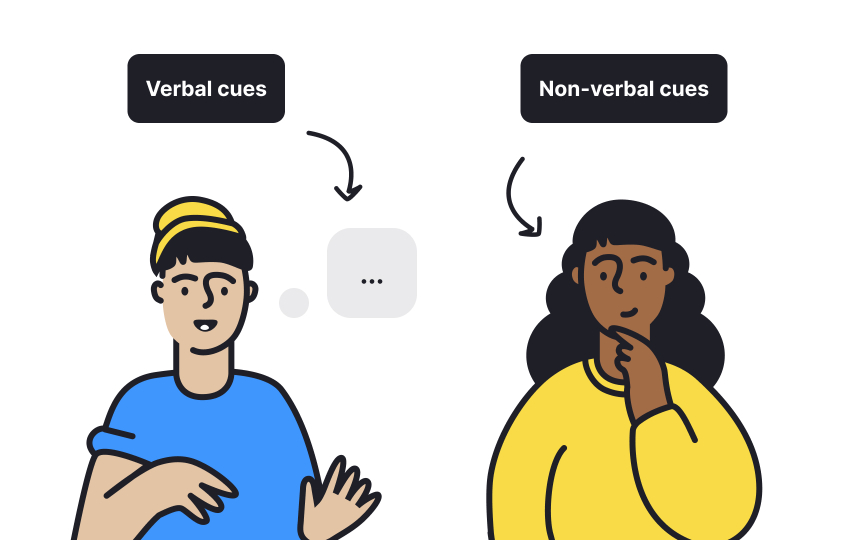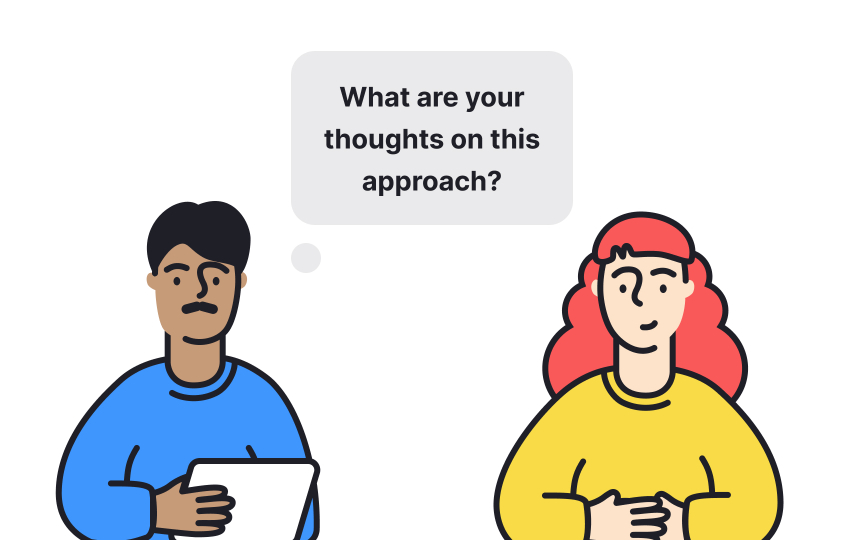Active Listening and Empathy in Team Dynamics
Master the most undervalued superpower in team communication — the art of truly listening before speaking
Within cross-functional product teams, the ability to truly hear and empathize with colleagues bridges the gaps between different disciplines, perspectives, and working styles. When designers grasp the technical constraints voiced by engineers, when product managers deeply understand user research insights shared by UX researchers, and when developers tune into the strategic concerns raised by business analysts, teams move from mere coordination to genuine collaboration.
Through active listening, team members detect subtle nuances in feedback, uncover hidden assumptions, and create an environment where diverse viewpoints flourish. The practice extends beyond simply hearing words — it includes reading body language, acknowledging emotions, and responding thoughtfully to both spoken and unspoken signals. In high-performing product teams, active listening paired with empathy becomes the invisible thread that weaves together different expertise, transforming potential conflicts into opportunities for breakthrough solutions.
Active listening involves fully concentrating on, understanding, and responding to speakers rather than passively hearing their words. This skill builds trust and understanding within cross-functional teams, leading to better collaboration and fewer misunderstandings.
Active listening requires focused attention on both verbal and non-verbal cues while suspending judgment. Listen without planning your response, maintain appropriate eye contact, and use subtle nodding or brief verbal acknowledgments to show engagement. These behaviors demonstrate respect and encourage open communication.[1]
Implementation in teams starts with individual practice in one-on-one meetings. Begin by summarizing what others say before responding, using phrases like "What I'm hearing is..." or "Let me make sure I understand..." Resist the urge to rush into sharing your own points; instead, focus on fully comprehending your colleague's perspective. Encourage team members to adopt this approach by modeling it consistently in daily engagements.
Pro Tip: Before responding to a colleague in meetings, take a breath and silently count to 3. This brief pause ensures you're responding thoughtfully rather than reactively.
Here are some practices to do so:
- Conduct role reversal exercises in team meetings to foster understanding. For example, a
UX designer could present a feature from a developer's perspective, highlighting the technical constraints they might face. - Encourage open sharing of personal working styles and limitations. For example, a product manager might explain that they work best with detailed specifications, while a developer might share their need for clear, concise tasks to minimize confusion.
- Actively recognize and validate team members' challenges. For example, acknowledge a product manager's difficulty in balancing stakeholder requests with development timelines.
- Establish psychological safety for expressing concerns without judgment. Create a "concern corner" in meetings where team members can voice worries without fear of criticism.
- Implement regular cross-functional shadowing sessions to gain diverse perspectives. For instance, have a developer spend a day with the marketing team to understand how features are communicated to users.
- Promote informal knowledge exchange through casual meetups or virtual hangouts.
Body language awareness in professional settings involves recognizing and interpreting non-verbal cues that impact team communication. Generally, open body language creates an inviting, receptive atmosphere through specific physical positions like uncrossed arms and legs, palms visible when gesturing, shoulders relaxed and facing others, and a slight forward lean when interested. Closed body language can have the opposite effect: crossed arms create barriers, turned-away shoulders indicate disengagement, and leaning backward suggests disagreement or discomfort.
To develop body language awareness:
- Start with self-observation and conscious adjustment of your own non-verbal signals. Notice how your posture changes when engaged versus disengaged, and how others respond to your physical presence in meetings.
- Practice maintaining open body language while being mindful of cultural differences. For example, in some cultures, a firm handshake is a common greeting, while in others, a bow or a nod may be more appropriate. Being aware of these preferences can help create a more respectful and comfortable environment for all team members.
- Be aware of how various environments, such as formal meetings or casual conversations, can shift the meaning of certain gestures. For example, leaning back in a chair might signal confidence and relaxation in a casual setting but could be interpreted as disengagement or lack of interest in a formal meeting.
- Lastly, consistency is key when reading body language — look for patterns over time rather than isolated signals from team members.[2]
Effective question-asking drives deeper understanding, uncovers hidden assumptions, and leads to better solutions in team collaboration. The right questions at the right time can prevent misalignments, clarify requirements, and spark innovative thinking.
Questions fall into distinct categories, each serving different purposes. Open-ended questions ("How might we..." or "What leads you to that conclusion?") encourage exploration and detailed responses. Closed questions ("Have you tested this?" or "Is this the final version?") confirm specific facts. Probing questions ("Could you elaborate on...") dig deeper into initial responses.
When using questions in conversations. keep these tips in mind:
- Start with broad, open questions to understand context, then use probing questions to explore specific areas of interest. End with closed questions to confirm understanding.
- Practice silence after asking questions — allow others time to think and respond fully.
- Leading questions, like "Don’t you think this solution is better?" suggest a desired response and can make the person feel pressured. A neutral alternative would be, "What do you think about this solution?" which allows the person to share their opinion without feeling manipulated.
- Similarly, difficult questions should be framed neutrally to prevent defensiveness. For example, instead of asking, "Why didn’t you complete this on time?" which can sound accusatory, a more neutral approach like, "Can you help me understand what might have delayed the timeline?" encourages an open discussion without placing blame.
Emotional intelligence (EI) in professional
EI comprises 4 core components:
- Self-awareness (recognizing your emotional triggers and responses)
- Self-management (regulating your reactions)
- Social awareness (reading the team's emotional climate)
- Relationship management (using emotional understanding to strengthen team bonds)[3]
Each component directly impacts team dynamics and project outcomes. In practice, strong EI manifests as the ability to receive critical feedback constructively, give difficult news sensitively, and maintain composure during high-pressure situations. For instance, before intervening in a tense meeting, EI helps you regulate your own emotions, ensuring you respond thoughtfully rather than react impulsively.
Cultural differences manifest in multiple dimensions: communication (direct vs. indirect), decision-making (consensus vs. hierarchical), time management (linear vs. flexible), and feedback styles (explicit vs. implicit). For example, while some cultures value speaking up in meetings as engagement, others prioritize listening and measured responses.
Here are some practices to help building cultural sensitivity:
- Acknowledge your own cultural biases to improve awareness and understanding, like recognizing that you may prefer direct communication, but others might prefer a more indirect approach.
- Learn local greeting customs such as addressing someone by their title in some cultures and ensure you pronounce names correctly in meetings.
- Clearly document communication preferences, like noting if someone prefers emails over calls or if they prefer brief updates instead of lengthy reports.
- Always verify understanding when language barriers might cause confusion, for example, by asking clarifying questions or paraphrasing to ensure mutual understanding.
- Respect different cultural approaches to time management, such as understanding that some cultures may prioritize flexibility over strict adherence to deadlines.
- Consider cultural holidays when planning project timelines, for instance, scheduling around major holidays like Diwali or St. Patrick's Day to avoid delays.
Biases are unconscious preferences and assumptions that affect team decisions and
Mitigating bias requires systematic approaches and structured decision-making processes:
- Pre-commit to evaluation criteria: For example, decide on key metrics (like project impact or technical feasibility) before reviewing proposals, preventing decisions based on personal preferences.
- Rotate roles: Have different team members lead meetings or projects to prevent the same voices dominating decisions.
- Use structured formats: When brainstorming, use a template for everyone to present ideas, ensuring equal consideration.
- Challenge the status quo: If the team always follows a set process, don’t hesitate to challenge it by exploring new methods or tools.
- Seek diverse perspectives: Before a major decision, actively ask for input from team members with different backgrounds or expertise to broaden the discussion.
Difficult conversations in professional
Structure difficult conversations in 3 phases:
- Preparation: Gather specific examples, choose the right timing, and plan key talking points. For example, before addressing a team member's missed deadlines, prepare by noting the exact instances and their impact on the project.
- Dialogue: Active listening, emotional regulation, and clear communication are crucial. During the conversation, focus on observable behaviors and use “I” statements. For instance, instead of saying "You’re always late to meetings," say "I’ve noticed that when you arrive late, it disrupts the flow of our discussions." Keep the conversation solution-focused, like suggesting a plan for improving punctuality.
- Follow-up: Ensure shared understanding and agreed-upon action items. For example, after the conversation, schedule a follow-up meeting to check on progress and revisit action items, such as setting a reminder for meetings.
References
- Emotional Intelligence in Leadership: Why It's Important | Business Insights Blog
Topics
From Course
Share
Similar lessons

Share & Collaborate on Figma

Mentorship Program



















